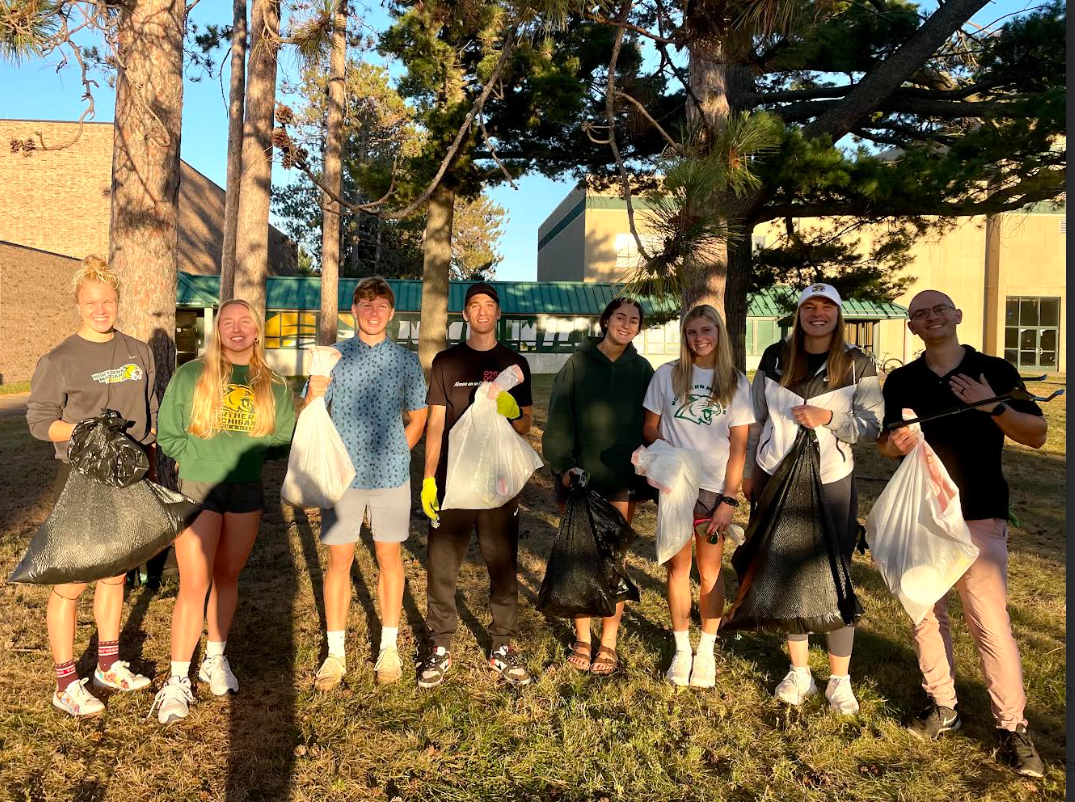After the first days of my debut as an ecosystem restoration technician, I stepped out of thick fields of shrubs that drooped with blue-dyed liquid dripping down their stems. As someone passionate about sustainability, spraying bushes with herbicide left me rethinking things when I clocked out.
During the summer of my freshman year, I dipped my feet into science-related fields and decided to double-major in multimedia journalism and environmental science. With the hope of balancing out my experience in each, I landed my new job at an environmental consulting firm.
Among other things, most clients had our crews spot-treating their ecosystems with herbicide. While the herbicide was only 3% of the spraying solution, it did its job. Days after our onsite work, that honeysuckle sprout someone hit became brown and shriveled. It’s a sad sight.
Crafting a more environmentally sound world is a challenge, of course. To restore natural resources and habitats, researchers have worked hard to find ways to mitigate their destruction. Invasive species are problems that have been dealt with in hundreds of ways, herbicide treatments being one of them.
The ethics of using such harsh chemicals are heavily debated, and I found myself doing my own research after leaving work with a heavy head. A publication posted by the National Library of Medicine concluded that herbicide treatments can improve ecological stability, although the effects are short-term.
We also know that herbicide has many implications. Runoff and leaching can destroy the environment even more, and native plants can be hit unintentionally during treatments. Incorrect timing, mixing, and application of herbicide can cause excess chemicals to enter soils and ecosystems without being effective.
From a moral standpoint, I also found myself wondering: do I, as a human, have the right to decide what plants get to live or die? Invasive species destroy environments, but perhaps I should allow nature to run its course. Maybe a more reasonable alternative is to find other low-risk methods to protect them.
After discussing my position with experienced scientists, they told me stories about how they used herbicides in their first jobs too, and used worse ways to control invasive species. They told me that if nothing else, the experience allows for a widened perspective.
Restoration methods always have externalities; hand-pulling weeds is slower and more difficult but is less damaging than using chemicals like triclopyr and glyphosate.
I explored different restoration techniques at work aside from spraying and learned the ins and outs of hand-pulling and plug planting. Many more experienced coworkers of mine conducted prescribed burns and surveys as well. The company effectively restored environments that desperately needed saving, and there is no doubt that herbicide treatments improved the states of many.
Still, I was left undecided about my opinion on the use of the treatments. I was lucky to be at a company that focused heavily on safety and the correct use of herbicides, but mistakes can and were still made. Other companies could be much less careful and destroy ecosystems rather than restore them. In some cases, herbicides could be used with ill intent, without considering the environment.
Luckily, pesticide use is heavily regulated by the State of Michigan. An applicator must go through a surprisingly difficult process to obtain their license. Herbicide can be harmful, but dramatic consequences can be avoided if people are correctly educated and trained.
I have always been a huge advocate for the environment. I go out of my way to seek ways I can make positive changes in my life that will improve the natural world around me. While herbicide treatments were not my first choice to restore crucial ecosystems, my experience at work has certainly opened my mind.
I do not believe that applying pesticides is the best way to prevent invasives from doing harm. I am also not convinced that killing thousands of organisms is the solution to restoring environments, regardless of the method.
I believe that with continued, extensive research on herbicide and education provided to its applicators, the treatments can be used as long as alternate methods are actively sought.
To me, education is the most important factor. The more people learn, the more they will become curious and study ways to make discoveries and positive changes.
For environmentalists like me, studying and using these methods first-hand has provided me with a much deeper understanding of their use.
Looking back into fields painted blue was not satisfactory, but it allowed me to learn. Now I know the pros and cons of herbicide treatments, and can use them to seek improvements and inform others of ecological restoration methods in the future.
Even if the future of the natural world looks grim, people continue to experience and learn. In education, there is hope.


























